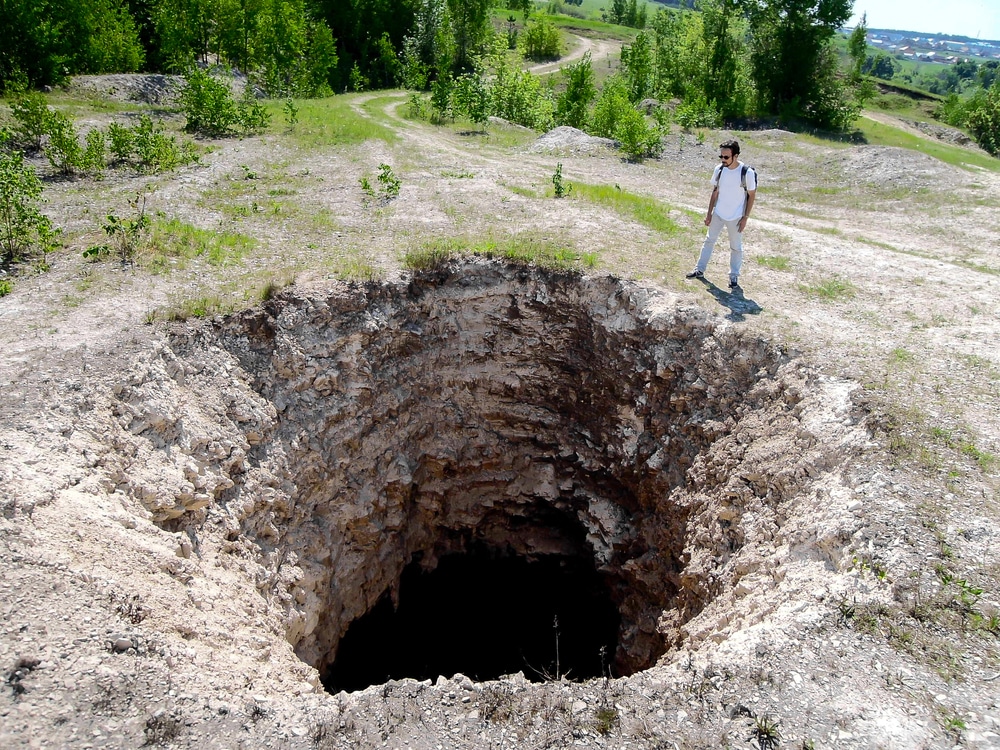Scientists in China have begun digging a 10,000-meter (32,808 feet) hole into the Earth, the deepest ever attempted in the country. Digging down through 10 layers of rock, the team hopes to reach rocks from the Cretaceous Period, the layer known as the Cretaceous System, which dates back up to 145 million years.
According to iflscience, The project, which broke ground on Tuesday, could be used to identify mineral resources as well as help assess environmental risks like earthquakes and volcanic eruptions. The hole, while impressively deep, will not be the deepest human-made hole on Earth. That title goes to the Kola Superdeep Borehole, on the Kola Peninsula in northwestern Russia.
The project, which spanned from May 24, 1970, to just after the collapse of the Soviet Union, saw the deepest branch of the hole reach 11,034 meters (36,201 feet) below sea level.
The team found that the rocks deep below the Earth were a lot wetter than they were expecting. Before the borehole found it, scientists had thought the water would not permeate the rock so deeply.
They had also been expecting to find a layer of basalt beneath the continent’s granite, as this is what was found in the oceanic crust. Instead, they found that beneath the igneous granite was metamorphic granite. Since the continental crust was granite all the way down, this was evidence for plate tectonics, a theory that had only recently begun to be accepted when they began digging the borehole.
Digging into the Earth doesn’t always go so smoothly. An American team in the 1960s reached 183 meters (600 feet) beneath the seafloor, going through 13 meters (43 feet) of basalt in the uppermost layer of oceanic crust before the project was canceled due to mismanagement and financial troubles. With these problems aside, the task is still a huge undertaking.
Chinese president Xi Jinping named “deep Earth” as one of four strategic frontiers for the country’s scientific community. At the time, Yigang Xu at the Chinese Academy of Sciences said the new focus on geological exploration was mainly driven by the need for China to reduce reliance on imports of minerals, metals and oil and gas.
Xinjiang’s Tarim Basin contains some of China’s biggest and deepest oil fields, and Sinopec has developed other ultra-deep wells elsewhere in the region. This includes the Shunbei oil and gas field, where the company says it has drilled 49 wells deeper than 8000 metres.
According to New Scientist, The drilling project could also offer researchers insight into the unique geology of the Tarim Basin. The basin collects water drained from three mountain ranges, and is thought to have been formed during the closure of the Palaeo-Asian Ocean more than 200 million years ago.
“It looks very much like an industrial oil drilling project as opposed to a scientific drilling project,” says Edward Sobel at the University of Potsdam in Germany. “Research wells usually try very hard not to find oil and gas.”
Still, he says the drilling project could also offer researchers insight into the unique geology of the Tarim Basin if it includes collecting core samples and taking geophysical measurements.
Sobel says the basin itself is more than a billion years old, with stable bedrock overlaid by hundreds of millions of years of sediment. “You’ve got a pretty continuous pile of sediment from the Cambrian [period] on”, comparable to the strata visible in the Grand Canyon, he says.

















